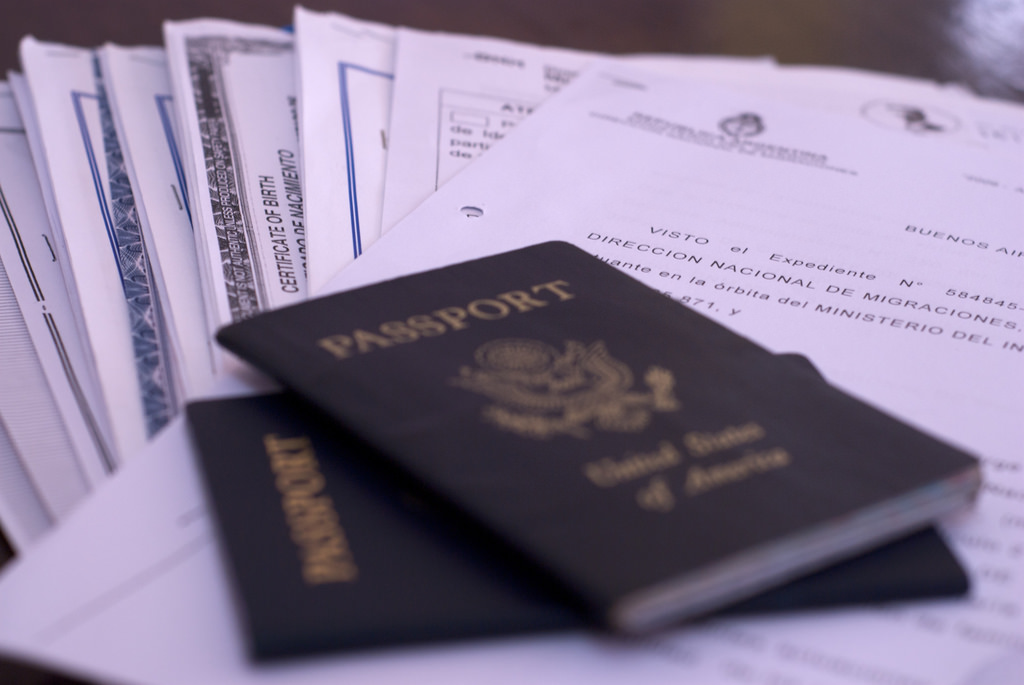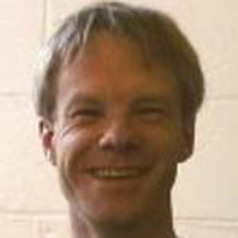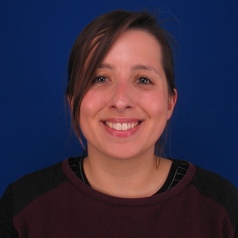Passport officers often have to scrutinise hundreds of people each day. They have just a few seconds to stare through their glass screens at the impatient and perhaps slightly dishevelled traveller facing them and decide if their face matches the tiny photograph in their passport. And this isn’t just their job – it’s a matter of great national security.
In laboratory studies, under optimal conditions, people are about 90% accurate when they are asked if two photos of unfamiliar people feature the same or different individuals. But face-matching accuracy decreases when you also have to look at written biographical data such as age and sex, if the subject puts on (or takes off) glasses, and as the time increases between when the photo was the taken and when the matching is done.
Biometric technology such as iris scanners and facial recognition software mean that one day passports may not be needed at all. But these are far from perfect yet and most countries are likely to continue using human passport checkers for many years to come. So is there a way you can train passport officers to become better at spotting when someone’s face doesn’t exactly match their photo?
The art of face recognition isn’t just made harder by the fact that people frequently change their hairstyles and facial hair. Research has shown that repeatedly trying to match faces, as passport officers have to do, leads to a decline in performance. Specifically, participants are more likely to match different identification photos to the same individual, and these errors cannot be mitigated through simply switching rooms or taking breaks.
Face recognition is often thought of as the task of telling two different people apart. But often the face of the same person looks very different under different conditions, for example when the lighting or facial expressions change. It then becomes a challenge not only to detect differences between people, but also to identify information that is stable for each person across different photographs. Passport officers need to be quite confident about a mismatch to risk challenging someone.
Can you improve face-matching?
The ability to match faces consistently on different days can also vary from person to person. But a recent study suggested that experienced passport officers are on average no better than undergraduate students when it comes to accurately identifying individuals from their ID documents.
Multiple attempts have been made to improve face matching accuracy within psychological laboratories. For example, participants can be given feedback after every trial on whether they got a match right or not. This appears to mitigate some performance decline, and even brings those performing poorly up to the levels of those with higher aptitude for face matching, although still below 80% accuracy. But it would be impossible to give feedback in real-life scenarios, such as during passport control when you don’t know for sure whether the ID really does belong to the person using it.
There has also been some success in training people to recognise target individuals, for example by providing various still images of one person. This could be useful to passport officers who are looking to stop a specific person at the country’s border.
Surprisingly, experience on the job doesn’t seem to help much. One study of passport officers suggests that the length of service is unrelated to the officers’ face-matching accuracy. This finding ties in with other lines of evidence that show face-processing ability is innate and has limited plasticity after reaching its peak in adulthood.
Change the conditions
But all is not lost. One possible method of improving our border security could be to modify the working environment for passport officers. Studies suggest that working in pairs or even larger groups increases face-matching accuracy, as individuals can confer and discuss with each other.
Another solution could be to require more than a single photo per passport. Studies have shown that allowing participants to look at several photos, specifically ones that look different from each other in terms of things like lighting or pose, can improve matching performance. As most passports now have biometric information encoded inside, it should be easy to store several pictures.
Finally, another method to improve border security is to employ individuals with naturally superior face matching. Those in the top 2% for face recognition ability are typically called “super-recognisers”. Studies show they are much more capable of matching people who they are unfamiliar with, and are sought after for jobs including police CCTV work. London’s Metropolitan Police has an entire super-recogniser unit for this purpose. However, in the absence of an army of super-recognisers to guard national frontiers, researchers like ourselves will keep trying to find out what enables their abilities to new ways of improving the accuracy of identity checks.
 Anna Bobak is a member of SNP.
Anna Bobak is a member of SNP.
Peter Hancock receives funding from EPSRC and BBSRC.
Viktoria Mileva does not work for, consult, own shares in or receive funding from any company or organisation that would benefit from this article, and has disclosed no relevant affiliations beyond the academic appointment above.



 Google Seeks Delay on Data-Sharing Order as It Appeals Landmark Antitrust Ruling
Google Seeks Delay on Data-Sharing Order as It Appeals Landmark Antitrust Ruling  NASA Faces Major Workforce Reduction as 20% of Employees Prepare to Leave
NASA Faces Major Workforce Reduction as 20% of Employees Prepare to Leave  TSMC Set to Post Record Q4 Profit as AI Chip Demand Accelerates
TSMC Set to Post Record Q4 Profit as AI Chip Demand Accelerates  China’s AI Models Narrow the Gap With the West, Says Google DeepMind CEO
China’s AI Models Narrow the Gap With the West, Says Google DeepMind CEO  Tabletop particle accelerator could transform medicine and materials science
Tabletop particle accelerator could transform medicine and materials science  Lost in space: MethaneSat failed just as NZ was to take over mission control – here’s what we need to know now
Lost in space: MethaneSat failed just as NZ was to take over mission control – here’s what we need to know now  Trump Signs Executive Order to Boost AI Research in Childhood Cancer
Trump Signs Executive Order to Boost AI Research in Childhood Cancer  U.S.–Taiwan Trade Deal Spurs $500 Billion Semiconductor Investment in America
U.S.–Taiwan Trade Deal Spurs $500 Billion Semiconductor Investment in America  Apple Stock Jumps as Company Prepares Major Siri AI Chatbot Upgrade
Apple Stock Jumps as Company Prepares Major Siri AI Chatbot Upgrade  NASA Astronauts Wilmore and Williams Recover After Boeing Starliner Delay
NASA Astronauts Wilmore and Williams Recover After Boeing Starliner Delay  Publishers Seek to Join Lawsuit Against Google Over Alleged AI Copyright Infringement
Publishers Seek to Join Lawsuit Against Google Over Alleged AI Copyright Infringement  OpenAI Launches Stargate Community Plan to Offset Energy Costs and Support Local Power Infrastructure
OpenAI Launches Stargate Community Plan to Offset Energy Costs and Support Local Power Infrastructure  South Korea Sees Limited Impact From New U.S. Tariffs on Advanced AI Chips
South Korea Sees Limited Impact From New U.S. Tariffs on Advanced AI Chips  Morgan Stanley Flags High Volatility Ahead for Tesla Stock on Robotaxi and AI Updates
Morgan Stanley Flags High Volatility Ahead for Tesla Stock on Robotaxi and AI Updates  China Halts Shipments of Nvidia H200 AI Chips, Forcing Suppliers to Pause Production
China Halts Shipments of Nvidia H200 AI Chips, Forcing Suppliers to Pause Production  South Korea Seeks Favorable U.S. Tariff Terms on Memory Chip Imports
South Korea Seeks Favorable U.S. Tariff Terms on Memory Chip Imports 






























